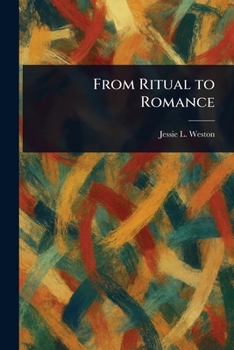From Ritual to Romance
Select Format
Select Condition 
Book Overview
Jessie L. Weston's "From Ritual to Romance" explores the fascinating origins of Arthurian romances, tracing their roots back to ancient rituals and mythology. This influential work delves into the historical and comparative religious contexts that shaped these enduring tales, particularly the quest for the Holy Grail.
Weston meticulously examines the links between Arthurian legends and earlier pagan rituals, unveiling potential sources for the key symbols and narratives found within these stories. The book offers a compelling examination of how these ancient traditions influenced the development of Western literature and culture. A cornerstone of literary criticism and historical analysis, "From Ritual to Romance" remains a significant contribution to our understanding of the Arthurian cycle and its profound connection to the past. A must-read for anyone interested in the history of romances, comparative religion, and the enduring power of myth.This work has been selected by scholars as being culturally important, and is part of the knowledge base of civilization as we know it.
This work is in the public domain in the United States of America, and possibly other nations. Within the United States, you may freely copy and distribute this work, as no entity (individual or corporate) has a copyright on the body of the work.
Scholars believe, and we concur, that this work is important enough to be preserved, reproduced, and made generally available to the public. We appreciate your support of the preservation process, and thank you for being an important part of keeping this knowledge alive and relevant.






